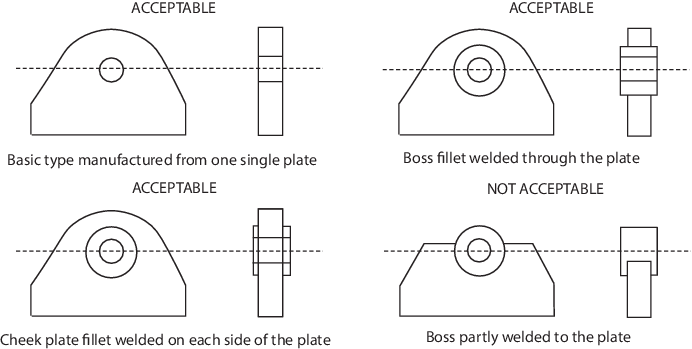3.3.1 The provision of padeyes is to be such that a uniform lift is achieved with no
off-centre loading of the lifting appliance occurring.
3.3.2 The design of padeyes is to be in accordance with a recognised National or
International Standard.
3.3.3 The padeye can be manufactured from one single plate, have a cheek plate
fillet welded on each side of the plate or have a boss which is fillet welded
through the plate, see
Figure 10.3.1 Acceptable padeye design. Padeyes
where the boss is only partly welded to the plate are not permitted.

Figure 10.3.1 Acceptable padeye design
3.3.4 All padeyes and lifting lugs are to be marked with their specific SWL. The locations
and SWL of the padeyes and lifting lugs are to be recorded on the towing and lifting
arrangement plan.
3.3.5 All padeyes and lifting lugs are to be tested to 1,5 times the SWL, as a vertical
load only.